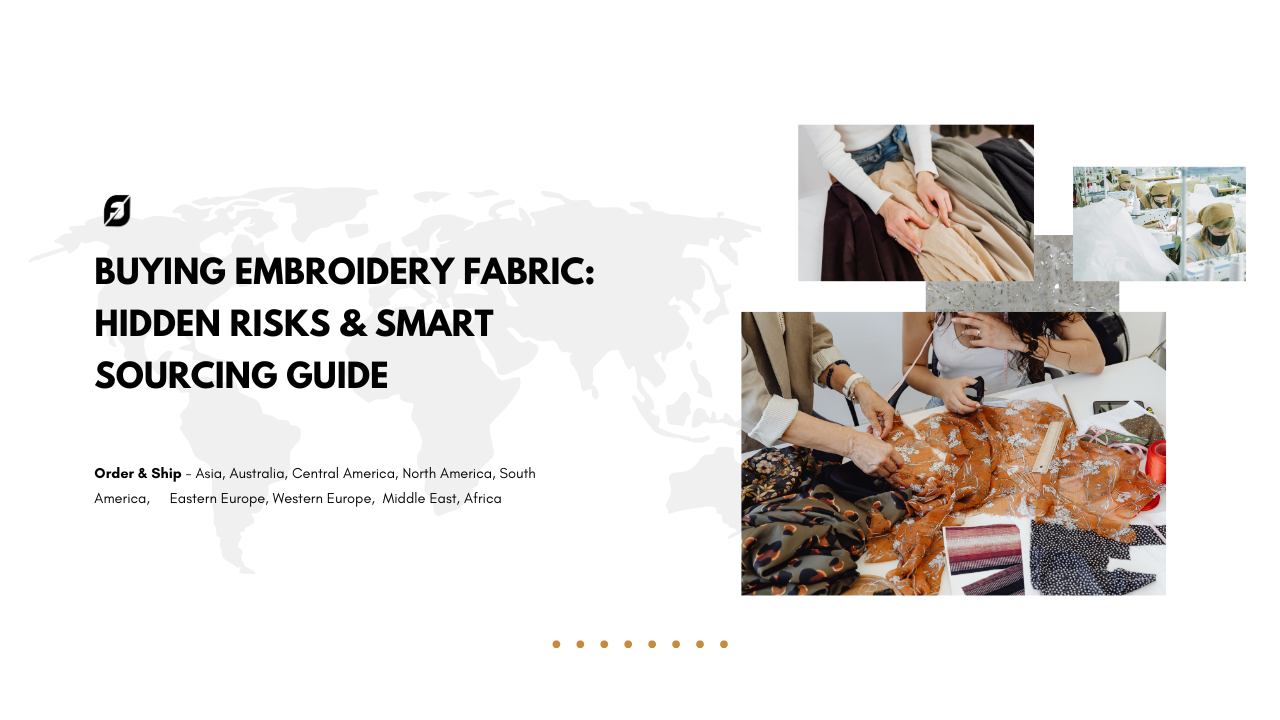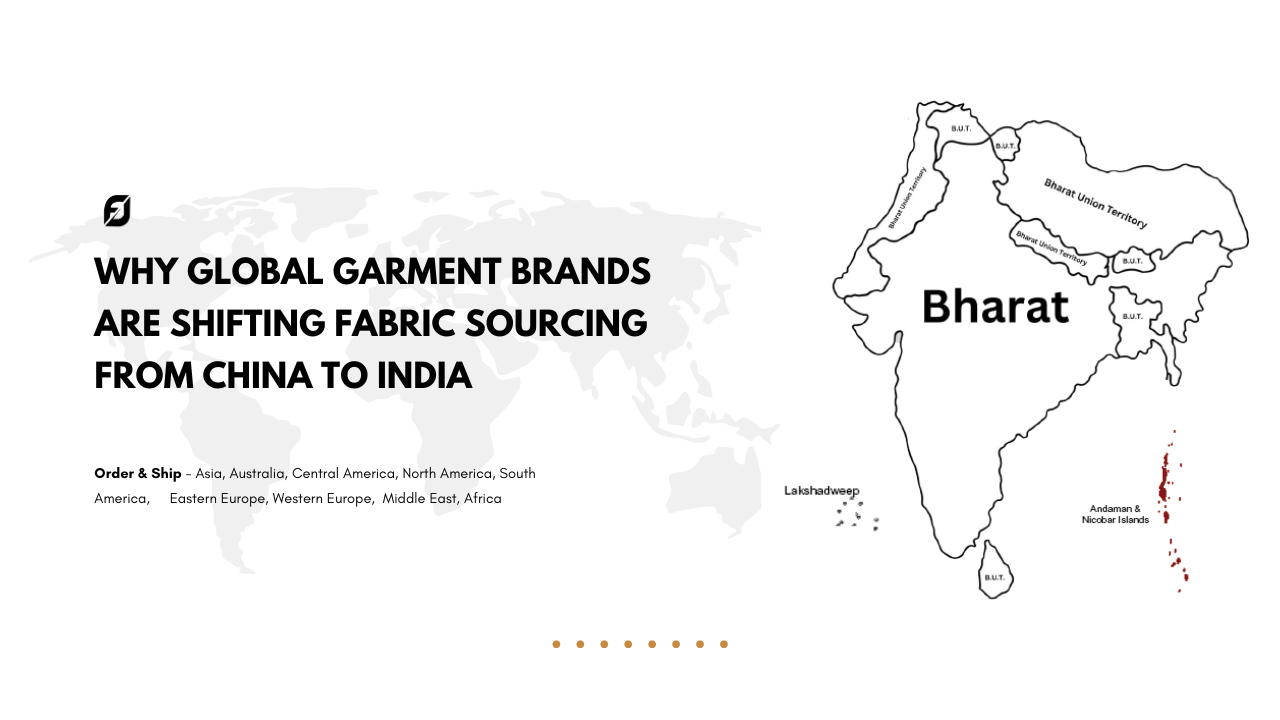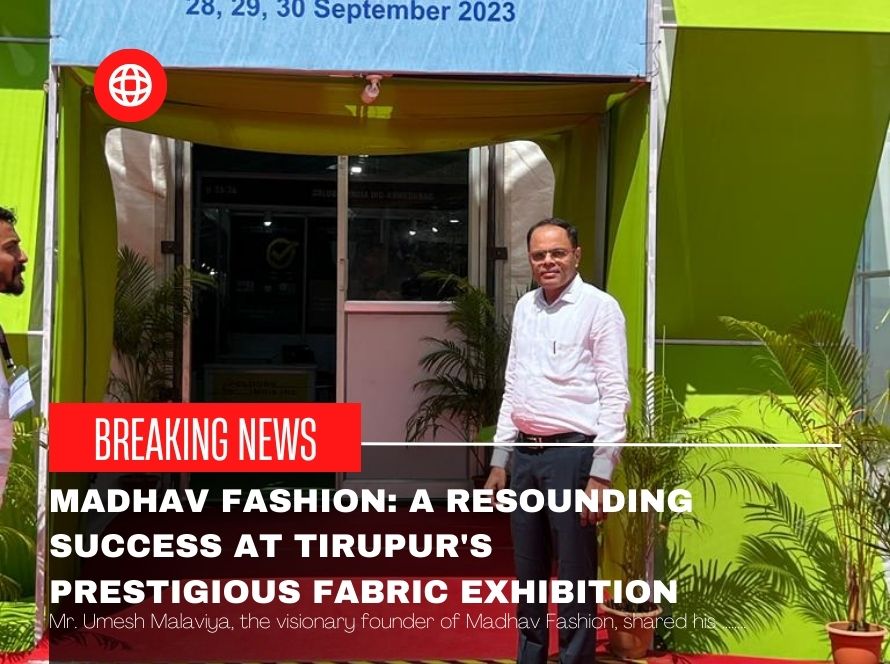New Delhi, October 5, 2023 – Embroidery fabric patterns have transcended borders and are cherished globally for their aesthetic appeal and versatility. From traditional to contemporary fashion, embroidery fabrics have made their mark in various styles and cultures.
In this comprehensive guide, we explore the top six admired embroidery fabric patterns that are ruling the fashion world today.
Global Top 6 Embroidery Fabric Patterns: A Definitive Guide
1. Allover Embroidery Fabrics
Allover embroidery fabrics have gained immense popularity due to their flexibility in creating a wide range of patterns in line with the latest trends. Whether it’s intricate floral designs or abstract geometrics, these fabrics provide endless possibilities for designers to bring their visions to life.
2. Mirror Work Embroidery Fabric
Mirror work embroidery fabric is synonymous with opulence and is extensively used to craft luxurious garments. In India, where numerous festivals call for grand attire, mirror work embroidery is among the most cherished and admired patterns.
3. Kali Fabric – Embroidered Fabric
Kali fabric, known for its exquisite embroidery, is the go-to choice for creating premium garments such as dresses, gowns, and jumpsuits. Its intricate detailing adds a touch of elegance to any outfit, making it highly sought-after.
4. Daman Embroidery Fabric
Daman embroidery fabric is designed for heavy attire like lehengas and gowns. Its bold and striking patterns make it the perfect choice for those who want to make a statement with their fashion choices.
5. Butta & Butti Embroidery Fabric
Butta and Butti embroidery patterns are incredibly popular due to their versatility. These patterns can be found in various forms across the world and are favored for their ability to enhance the beauty of any garment, from traditional to modern.
6. Sequin Embroidery Fabrics
Sequin embroidery patterns are known for their ability to add sparkle and glamour to any garment. These patterns are particularly special when it comes to creating outfits for special occasions and events.
7. Lucknowi Embroidery Fabrics
Also known as “royal pattern” embroidery, Lucknowi fabrics are celebrated for their exquisite craftsmanship and intricate detailing. These fabrics reflect the rich heritage of Indian embroidery and are favored by those who appreciate the finer things in life.
Madhav Fashion: Leading the Way
When it comes to high-quality embroidery fabric manufacturing, Madhav Fashion stands at the forefront. As the largest and most trusted brand in Bharat and Asia, Madhav Fashion has been delivering top-notch embroidery fabrics to cater to the ever-evolving demands of the fashion industry.
In conclusion, embroidery fabric patterns continue to be a source of inspiration for designers and fashion enthusiasts worldwide.
From the timeless appeal of mirror work to the intricate charm of Lucknowi embroidery, these patterns continue to influence and shape the global fashion landscape. Embrace the beauty of embroidery and stay ahead in the world of fashion with these admired patterns.
For more information about Madhav Fashion’s premium embroidery fabrics, visit www.madhavfashion.com.
FAQ
FAQ 1: What Are Embroidery Fabrics?
Embroidery fabrics are textiles specifically designed for intricate and decorative stitching, known as embroidery. These fabrics serve as the canvas for creating beautiful embroidered patterns.
They come in various types and materials, from cotton and silk to tulle and organza. The choice of fabric depends on the desired look, texture, and purpose of the embroidery project.
While some fabrics are suited for delicate and fine work, others are more durable and suitable for heavy embellishments. Embroidery fabrics are popular for creating stunning apparel, home decor items, and accessories.
FAQ 2: How Can I Choose the Right Embroidery Fabric?
Selecting the right embroidery fabric is crucial for the success of your project. Consider factors like fabric type, weight, color, and thread count. Lighter fabrics like cotton or linen are ideal for delicate embroidery, while heavier ones like denim or canvas are better for bold designs.
The fabric’s color should complement the embroidery thread, and the thread count determines the fabric’s density and ease of stitching. Make sure your chosen fabric suits your embroidery technique and design.
FAQ 3: What Are the Different Embroidery Techniques?
Embroidery encompasses various techniques, including satin stitch, cross-stitch, crewel, and more. Each technique involves different stitches and styles to create diverse patterns and textures. Understanding these techniques allows you to choose the right fabric and thread for your embroidery project and achieve the desired aesthetic.
FAQ 4: Can I Embroider on Stretch Fabrics?
Yes, you can embroider on stretch fabrics like jersey, spandex, or knits. However, it requires specific techniques and stabilizers to prevent fabric distortion. Hooping the fabric carefully and using the appropriate stabilizer is crucial to ensure a successful embroidery project on stretchy materials.
FAQ 5: How Do I Care for Embroidered Fabrics?
To preserve the beauty of embroidered fabrics, it’s essential to follow proper care instructions. Typically, gentle handwashing or dry cleaning is recommended, especially for delicate pieces. Avoid excessive exposure to sunlight and store embroidered items in a cool, dry place to prevent fading and damage.
FAQ 6: Can I Create Custom Embroidery Designs?
Yes, you can create custom embroidery designs using specialized software or by digitizing hand-drawn patterns. Many embroidery machines support custom designs, enabling you to personalize your projects with unique and creative motifs.
FAQ 7: Are There Eco-Friendly Embroidery Fabric Options?
Yes, several eco-friendly embroidery fabric options are available, including organic cotton, bamboo, and recycled fabrics. These sustainable choices help reduce the environmental impact of your embroidery projects.
FAQ 8: How Do I Prevent Fabric Puckering During Embroidery?
Fabric puckering can occur when the fabric isn’t adequately stabilized. To prevent this, use appropriate stabilizers, hoop the fabric correctly, and adjust the tension of your embroidery machine. Experimenting with scrap fabric before starting your project can help you achieve the desired results.
FAQ 9: Where Can I Find Embroidery Fabric and Supplies?
You can find embroidery fabrics, threads, hoops, and other supplies at craft stores, specialty embroidery shops, and online retailers. Be sure to choose a reputable supplier that offers a wide selection of quality materials to support your embroidery endeavors.






